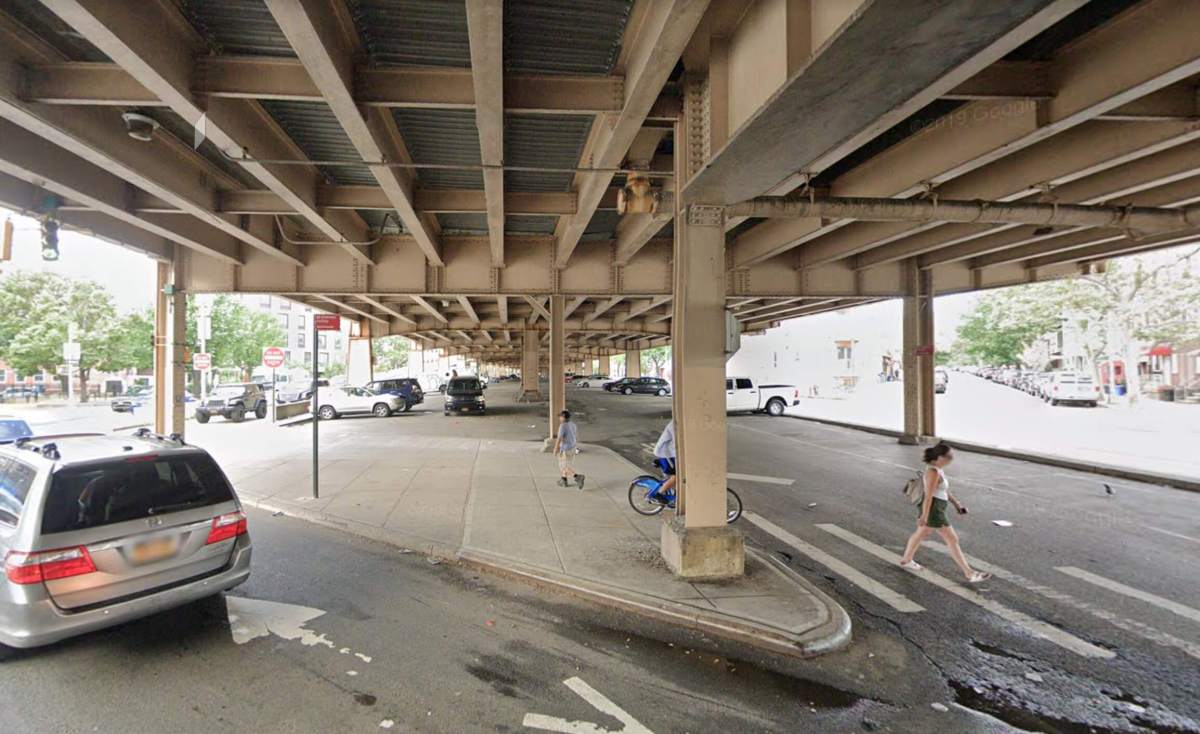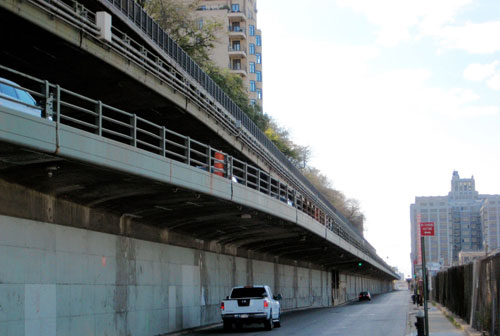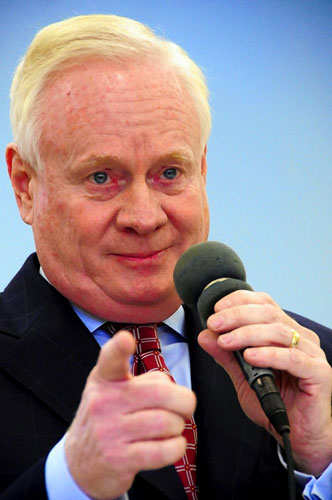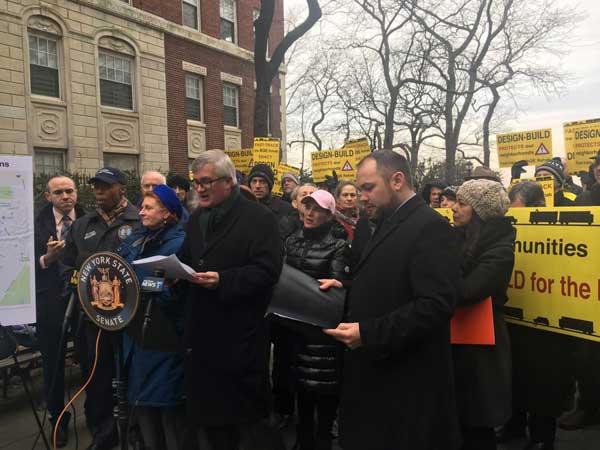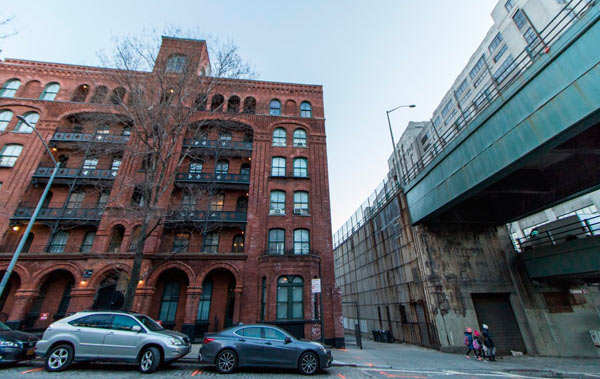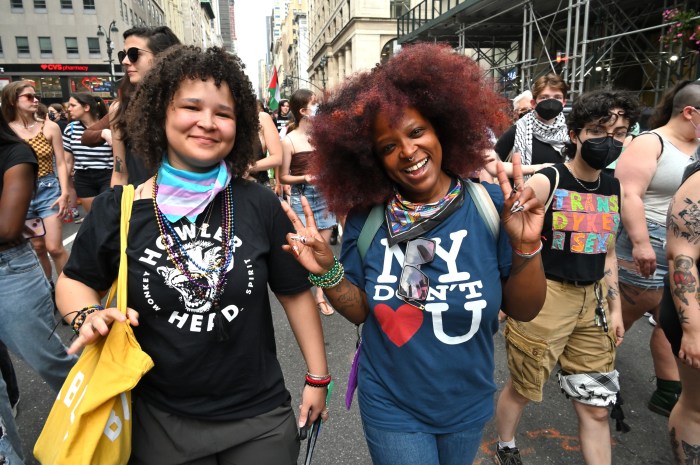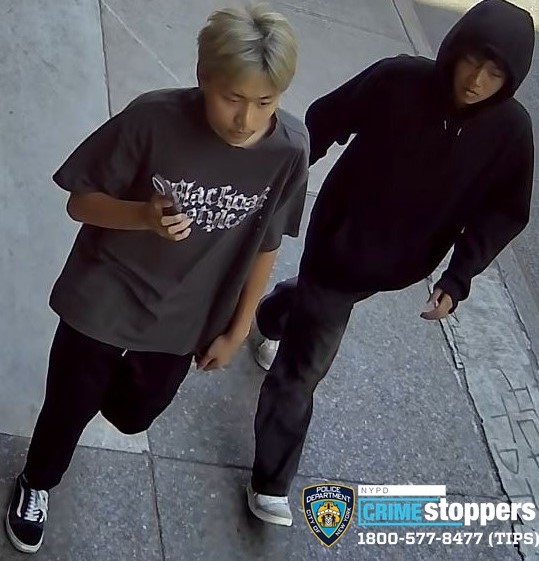They’re not gonna be meek about it!
A week after locals panned a city scheme to add hundreds of metered parking spaces beneath the Brooklyn-Queens Expressway in Williamsburg, activists have taken matters into their own hands to discuss alternative improvements to the long-neglected stretch along Meeker Avenue.
“The fact that [the Department of Transportation] is striking the ground over there and putting in meters means we’ll have to do it ourselves,” said Greenpoint organizer Kevin LaCherra, who hosted a virtual Nov. 12 discussion about the issue.
The north Brooklynites floated a wide range of proposals to transform the area under the Robert Moses-era roadway that cuts through the neighborhood into a welcoming open space that could reconnect the divided community, according to one advocate.
“We do not need, nor want, paid parking underneath this roadway — and what we do need is this space to be a connector that for so very long has been a disconnector,” said Lisa Bloodgood of North Brooklyn Neighbors. “It separated us, and we need it to bring us together.”
Area advocates have pushed the city to revamp the space for years, and DOT in 2017 gathered input with presentation slides showing transformed urban plazas around the city for inspiration.
The street safety group Transportation Alternatives launched their campaign to improve the dangerous roadway with their campaign “Make Meeker Move” in 2015, and at the beginning of this year, DOT Commissioner Polly Trottenberg said a new two-way green-painted bike path would come to the boulevard as part of 10 miles of protected lanes around the borough in 2020.
Progress on the improvements stalled during the COVID-19 pandemic, until the area’s Community Board 1 got a notice on Oct. 31 saying the city would add more than 300 metered parking spots between Metropolitan Avenue and Leonard Street. Just five days later, the civic panel unanimously rejected the parking scheme at a Nov. 5 meeting, although that vote was purely symbolic.
Transportation officials argued that the paid parking plan was necessary to fund their efforts to clear out tons of illegally dumped trash and move away homeless encampments, which will pave the way for future improvements to the space — but residents lambasted bureaucrats for pitching the unpopular idea in exchange for basic municipal services.
An agency liaison said it will be tough to find the funding to implement any more ambitious proposals due to the city’s cratering budget, but officials told the board they would hold off progress for now given their dismayed reaction.
LaCherra and other activists convened a week later to gather better ideas for the space, which included green infrastructure, safer street designs for pedestrians and cyclists, and high-quality open space.
Some advocates said the urban wasteland could become a linear park that linked residents on both sides and to other open areas nearby — such as the recently completed Under the K Bridge Park, McGolrick Park, McCarren Park, Bushwick Inlet Park, and Cooper Park.
“It’s got to be like a corridor where it is opening up the neighborhoods and bringing connectivity and safety to these neighborhoods,” said Katherine Thompson, a co-chair of Friends of Bushwick Inlet Park.
Environmentalists hoped the space could help capture stormwater runoff and offset air pollution around the busy expressway, and one parks advocate suggested connecting with other neighborhood groups working on the highway, such as the activism around the repairs of the crumbling Brooklyn Heights triple-cantilever section.
“I think it would serve our interests well to consider it with Brooklyn Heights and to consider the BQE overall and have this be part of a city-wide initiative in order to get potentially more funding if we went alone as a community for a certain portion of this space,” said Katie Denny Horowitz, the director of the North Brooklyn Parks Alliance.
The head of the food distribution organization Brooklyn Community Kitchen, Cassidy Andrews, said the proposals should include those experiencing homelessness along the corridor, rather than simply push them out.
“This is such a space where folks live and folks who really need mental health and addiction help are living right now,” Andrews said. “I think it would be a great thing to have maybe some sort of bunk beds or infrastructure, or at least programs for them instead of eradicating their entire environment for folks that do have resources for housing and shelter.”
Yet, area Councilman Antonio Reynoso’s chief of staff, Jennifer Gutiérrez, warned the civic-minded attendees that lame-duck Mayor Bill de Blasio’s administration would be unlikely to embark on any large-scale public infrastructure project — and they should instead focus on the next mayor and crop of Council members.
“[Councilmember Reynoso] is a little weary about what we can get accomplished as far as infrastructure investments with this current administration,” said Gutiérrez, who is running to replace Reynoso in 2021. “But I feel good about pushing DOT to table this absurd proposal and whatever story they’re selling us on this generating significant revenue.”
DOT reps promised the community board last week that they will pause their plans for now, but Meeker Avenue will be back on the agenda for the board’s December Transportation Committee meeting, according to committee chairman Eric Bruzaitis.


